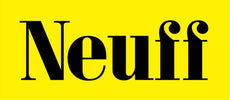
Cleaning guidance for jump landing areas
Although the worst of Covid lockdowns are (hopefully) behind us, it remains crucial that facilities are safe for athletes to use and enjoy. England Athletics has published comprehensive and useful guidance for athletes, coaches, venues and clubs, which can be found here. (Link correct at 7th July 2020).
They suggest contacting equipment suppliers for guidance on cleaning jump landing beds and areas - this is our guidance for tracks and venues with landing areas supplied by us.
What cleaning products can be used on a pole vault or high jump landing area?
Standard household disinfectant is effective against coronavirus and will not damage the landing area. Equally alcohol solution (70%+) can be used as an anti-bacterial agent and is safe to use on jump landing beds.
Check if any athletes have particular skin sensitivities. If they do, consider using a compatible disinfectant product, or warn athletes that they need to wear long clothing to avoid contact with the products.
Do not use bleach, including diluted bleach, as this may damage the cover or foam filling of the landing area, reducing its safe use. Bleach may also cause skin irritation for athletes using the landing area after cleaning.
How do you clean a pole vault or high jump landing bed?
The landing area should be wiped down with a standard household anti-bacterial disinfectant spray and a disposable cloth or paper towel after each athlete.
Pay attention to the route the athlete took to dismount from the bed and ensure all areas touched by the athlete are cleaned.
Guidance for using pole vault or high jump landing areas in case of infectious diseases.
In addition to the England Athletics guidance, we would recommend considering the following when using your landing areas if you know that there is a spike in Coronavirus, Norovirus or other infectious diseases:
- Remember to wipe the winder handle and any part of the uprights which has been touched, as well as cleaning the cross-bar itself.
- Consider changing your approach to competition so that each athlete takes all their attempts back-to-back. The landing area and cross bar can then be cleaned between each athlete, further reducing the risk of contamination.
- Do not share poles between athletes if at all possible. It is anyway preferable for athletes to use a pole which is specific to them, as using a pole of the correct specification for their weight and ability will improve their performance and reduce the risk of the pole breaking.
What is the England Athletics Guidance for Athletics Venues?
The jumps section of the England Athletics information for venues on 25th March 2021 is copied below for reference. Please check England Athletics website for the most up to date information.
Jumps
- Coaches should ensure they maintain social distancing at all times as well as maintain social distancing from any other coaches and athletes using adjacent space.
Vertical Jumps: High Jump and Pole Vault
- The mat is cleaned in line with manufacturers and UK Government guidance, before and after each group
- Operators must contact the manufacturer of the jump’s mats in use at their facility to confirm whether the proposed cleaning products can be used safely on their equipment. Disinfecting landing beds effectively against Coronavirus is the responsibility of the facility operator. The disinfectant used for this purpose must not damage or compromise the safety properties of the landing bed, or cause harm to staff, volunteers, or athletes.
- If sharing, poles should be re-gripped before use and any part of the pole outside of the grip should be cleaned before use by another athlete.
- Bars should be cleaned using an anti-viral spray or wipe before use and managed by dedicated individuals for a particular session – i.e. one athlete and the coach and cleaned between sessions.
Horizontal Jumps, Sand Pits
- Athletes follow hygiene guidelines for cleaning hands prior to any training starting.
- The landing pit is fully cleaned by turning and raking of the sand before and after each group, and rake between individual athlete/user. A venue operator may choose to use a high mist spray of sterilising fluid of a suitable concentration to neutralise the virus, this can be sprayed over the sand after use, as well as a turn and rake. Public Health England cleaning guidance is here.
- Equipment such as rakes and measuring tapes should be managed by dedicated individuals for a particular session – i.e. one athlete or the coach and cleaned between one athlete's series of jumps or between sessions.
Public Health England guidance for cleaning:
- cleaning an area with normal household disinfectant after someone with suspected coronavirus (COVID-19) has left will reduce the risk of passing the infection on to other people
- wear disposable or washing-up gloves and aprons for cleaning. These should be double-bagged, then stored securely for 72 hours then thrown away in the regular rubbish after cleaning is finished
- using a disposable cloth, first clean hard surfaces with warm soapy water. Then disinfect these surfaces with the cleaning products you normally use. Pay particular attention to frequently touched areas and surfaces, such as bathrooms, grab-rails in corridors and stairwells and door handles
- if an area has been heavily contaminated, such as with visible bodily fluids, from a person with coronavirus (COVID-19), use protection for the eyes, mouth and nose, as well as wearing gloves and an apron
- wash hands regularly with soap and water for 20 seconds, and after removing gloves, aprons and other protection used while cleaning


Leave a comment